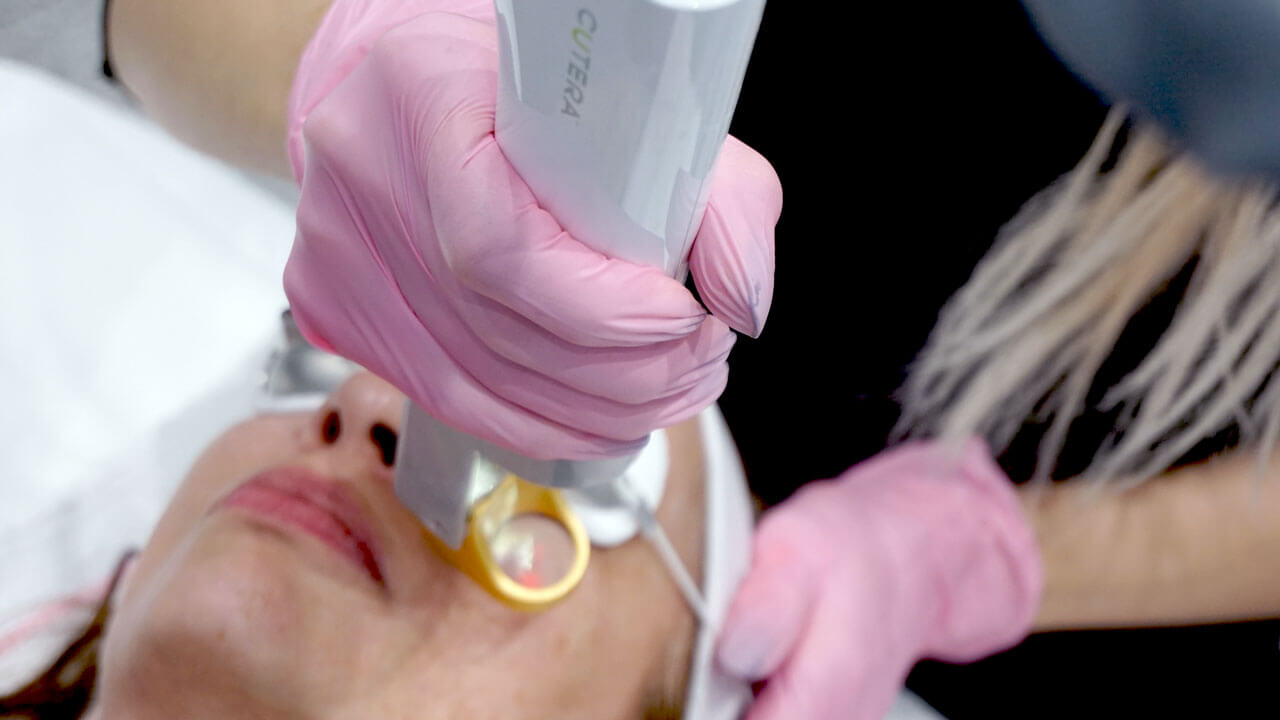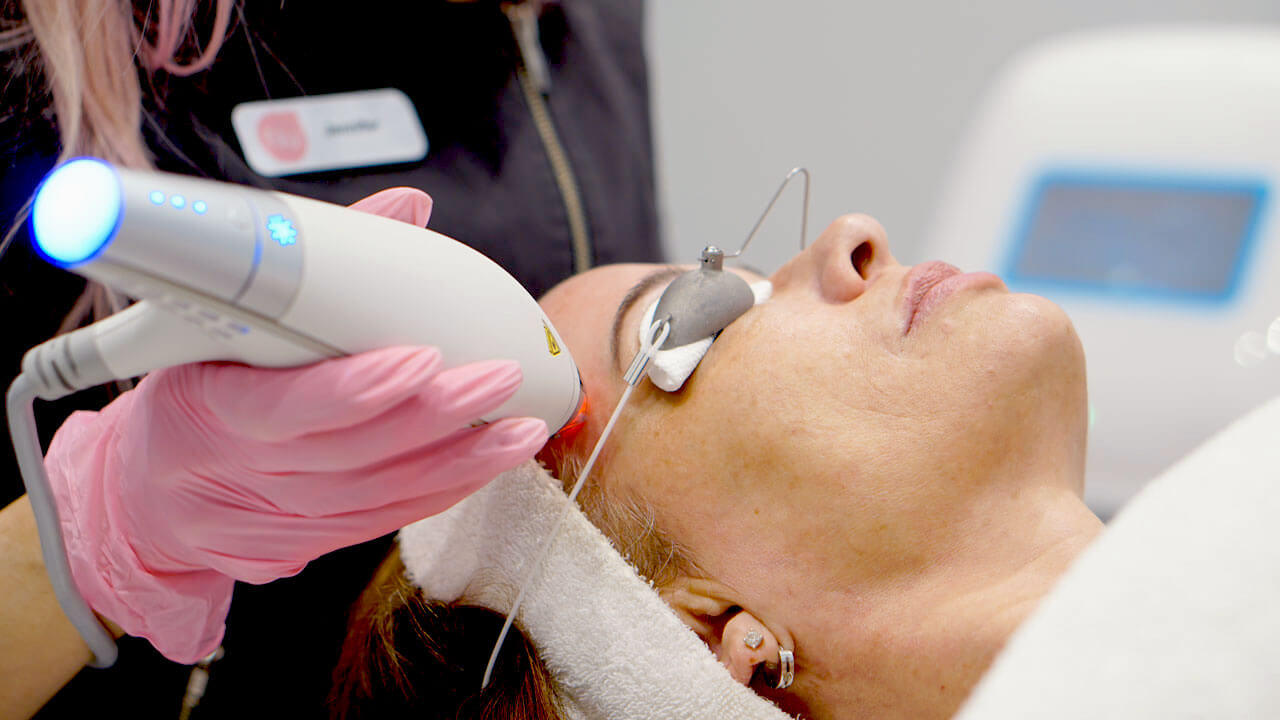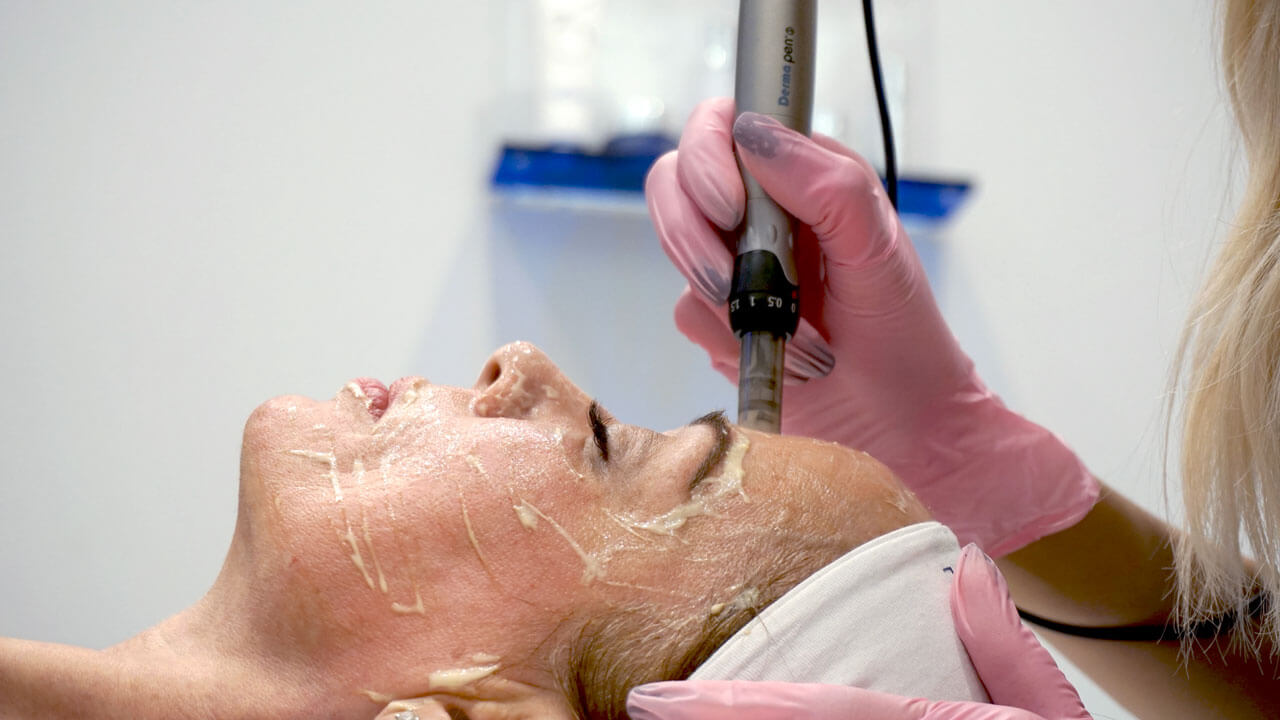At some point or another, most of us will get dark spots or discoloration on our skin, whether it’s the face or body. The technical term for this skin condition is hyperpigmentation. In other words, too much pigment. Age, genetics, medications and, of course, sun exposure can cause this uneven pigmentation and dark sun spots. On the face, we will most often see sun damaged skin on the high points such as cheeks, forehead and nose. However, sun damaged skin on the arms or elsewhere on our body that is often exposed is very much a reality as well!
What causes dark spots on your skin?
There are three main causes of dark spots on the skin: UV damage (sun exposure), genetics or hormonal influences, and inflammation or injury (think dark spots from acne). Whatever the trigger or cause of hyperpigmentation is, is essence it is simple when too much melanin is produced by the skin in a concentrated area.
Each of these causes can produce a specific type of pigmentation. Although dark spots may look appear to look alike, there is a best treatment option for each specific type of dark spot, meaning that not all dark spots can or should be treated the same. So what is the difference?
Genetics vs. Damage
We can break down the two basic types of pigmentation into two categories: Constitutive and Facultative pigment. In other words, genetic pigment and acquired pigment. Constitutive pigment is the natural, genetically determined colour of our hair, skin and eyes, uninfluenced by UV light or hormone exposure. This is not a type of pigment that we can change, simply because we cannot change our DNA.
Facultative skin colour results from exposure to UV light, hormonal fluctuations, injury or inflammation and other environmental factors and is acquired over our lifetime. This is the “fixable” stuff, or the stuff that pops up later in life.
Types of Hyperpigmentation
Understanding how the skin produces its colour is important for many reasons, particularly when treating hyperpigmentation. Hyperpigmentation is a blanket term for areas or patches of skin that are darker than the rest. This could mean anything from freckles and birthmarks, sun damage or age spots, pigmented scars (PIH), melasma, and so on. Each of these types of pigmentation is triggered differently, so successful treatment is dependant on identifying the different type of pigment that you are treating.
Freckles
Technically known as ephelis, will increase in number and darkness with sun exposure. Lentigines, on the other hand, will stay consistent in number and darkness regardless of sun exposure or season. Freckles or Lentigines can appear all over the face and body, even on the lips or eyeballs.
Sun Spots or Sun Damage
These are flat areas of discolouration that can be tan or varying shades of brown. They appear on the parts of your body that get the most sun exposure, such as your face, shoulders, back, and the backs of your hands. They often start to appear around the age of 30-40, though some people may develop them earlier or later in life, depending on the amount of sun exposure they’ve had.
Liver Spots or Age Spots
Age spots, also called liver spots (although they have nothing at all to do with your liver!) and solar lentigines, are small dark areas on the skin. They vary in size and usually appear on the face, hands, shoulders and arms — areas most exposed to the sun. Age spots are very common in adults older than 50.
Actinic Keratosis
Actinic keratosis (AK), also known as a solar keratosis, is a crusty, scaly growth caused by damage from exposure to UV radiation. You’ll often see the plural, “keratoses,” because there is seldom just one. AK is considered a pre-cancer because if left alone, it could develop into a skin cancer, most often the second most common form of the disease, squamous cell carcinoma.
Birthmarks
Birthmarks are one of the most unique types of pigmentation because there are so many varieties. Most commonly we see ‘cafe au lait’ birthmarks, which are a sort of ‘coffee with milk’, brown kind of colour. However birthmarks can also be red (port wine stains, salmon patches), vascular (hemangiomas and cherry angiomas), or even a grey-blue bruised-looking colour (Mongolian spots). In some cases, a birth mark may be hypopigmented, meaning it lacks colour. Birthmarks can be either flat or raised (moles).
Melasma
Melasma is a chronic and very common skin condition that causes dark, discoloured patches (usually muddy brown or grey-brown patches) of pigmentation on the skin. Most people will get melasma on their cheeks, bridge of the nose, forehead, chin and above their upper lip. Melasma may also appear on other parts of the body that get significant sun exposure, such as the forearms and neck, although this is less common.
Post-Inflammatory-Hyperpigmentation and Erythema (PIH and PIE)
Pigmentation leftover from injury or infection, like acne, may be either PIE or PIH. This is a type of inflammatory pigment that the body uses in part due to wound healing and as protection. With PIH, the pigment producing cell itself (the melanocyte) is malfunctioning. Think of the melanocyte like your skin’s bodyguard — it uses pigment as a way to protect the deeper tissue and cells that sit below in the dermis. Our melanocyte cells can become stimulated to produce pigmentation from injury and inflammation, such as with acne.
Treating and Removing Dark Spots
While there are many ways to go about treating the skin, we will always create a three dimensional treatment plan that is customized to each individual and treats the body as a whole on a functional level. Although you may find some home remedies for dark spots, lemon juice and baking soda will only worsen the condition of the skin.
Whenever correction is concerned, leave it to the professionals. Here at NuAGE Laser, treating skin Tone + Texture is our expertise, so we know what to do in every situation (even if you’ve already attempted the DIY route). Laser for dark spots and medical grade skin care are just two of the ways that we can treat and remove dark spots for good.



Particularly useful for ‘spot treating’, IPL or Alexandrite lasers may be used to reduce hyperpigmentation. These technologies work by employing light energy into the skin which is absorbed by the clusters of melanin. The intensity of the energy causes the pigment clusters to burst apart into tinier pieces, which then allow your lymphatic cells to come and ‘clean up’ the damaged cells. Post-treatment, there may be micro-crusts for 3-7 days which will naturally slough off.
Clear & Brilliant is a fractional, non-ablative laser treatment that works by evaporating channels in the mid-layer of your skin to create a fractional, or partial, injury. The pigment absorbs more of the heat energy, which allows it to shatter into smaller pieces that your immune and lymphatic cells can flush out. Clear & Brilliant also gently resurfaces the skin to even out texture + tone.
Microneedling creates a controlled injury response in the skin by physically creating channels in the upper-mid layer of the skin. As the needles pass through clusters of pigment, they are physically shattered into tiny pieces. We also infuse the skin with antiinflammatory and antioxidant serums, including tyrosinase inhibitors. We may also add a “peel” booster at the end of the treatment which contains further tyrosinase inhibitors and exfoliators to speed up the resurfacing of pigment.

